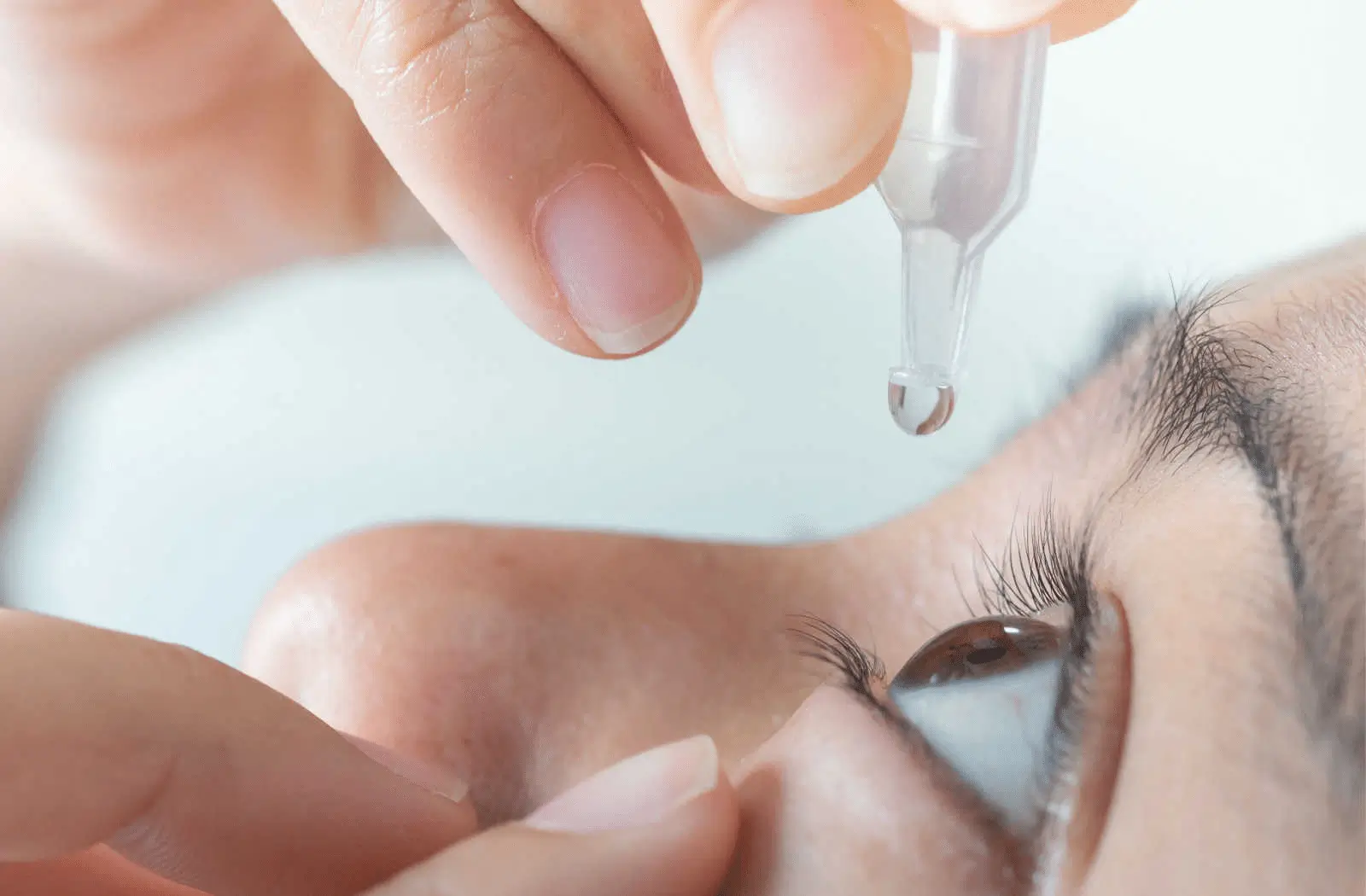Only for Licensed Professionals
Only for Licensed Professionals
.webp)
Tobradex Dosage and Application Frequency
David Fuller
Last Updated On: September 20, 2025
Getting the dosage right is one of the most critical parts of successful eye treatment. Using too much or too little can affect how well the medication works—and in some cases, may even cause complications. A 2021 study published in the British Journal of Ophthalmology found that the misuse of antibiotic eye drops can contribute to treatment failure and rising bacterial resistance, highlighting the importance of careful dosing in eye care.
One medication often prescribed by ophthalmologists is Tobradex, a combination of tobramycin (an antibiotic) and dexamethasone (a corticosteroid). While the formula itself is effective, its success largely depends on applying the drops or ointment at the right frequency and duration.
In this article, we’ll break down how often Tobradex should be used, provide general dosing guidelines, discuss important safety tips, and explain when it’s best to seek professional advice.
Key Takeaways
- Tobradex is available as an ophthalmic suspension (eye drops) and an ophthalmic ointment, each with its own specific dosing schedule.
- Correct dosing is essential: eye drops are generally applied every 4–6 hours, while ointment is used 3–4 times daily, with adjustments made based on the severity of the condition.
- Titration strategies enable doctors to initiate treatment at a higher frequency for acute infections, then gradually taper the dosage as symptoms improve, thereby avoiding rebound inflammation.
- Special care is needed in children, older adults, and high-risk patients (e.g., glaucoma, cataracts), who may be more sensitive to steroid-related side effects.
- Proper application techniques, such as washing hands, shaking the suspension, avoiding tip contamination, and gently pressing the inner corner of the eye, improve safety and absorption.
- Patients should never self-medicate or share eye drops with others. Adherence to prescribed schedules and regular follow-up visits are key to safe and effective treatment.
About: Operating since 2016, Med Supply Solutions is known for being one of the industry’s top and trusted suppliers of cosmetic and viscosupplementation products. If you’re looking to buy Tobradex online, contact our sales department for more information.

Standard Recommended Tobradex Dosage Suspension and Ointment

Tobradex is available in two formulations: an ophthalmic suspension (eye drops) and an ophthalmic ointment. The suspension is commonly prescribed as one to two drops every 4 to 6 hours, depending on the severity of the infection. In more serious cases, an ophthalmologist may recommend applying one drop every two hours initially to gain better control over symptoms. Once improvement is seen, the dosage is gradually tapered to avoid unnecessary steroid exposure.
For the ointment, the usual dose is a small ribbon, about half an inch, placed inside the lower eyelid three to four times a day. Ointments stay in contact with the eye longer than drops, making them especially useful before bedtime.
In some severe infections, doctors may prescribe both the suspension and ointment together for more complete coverage. However, dosing must be carefully monitored, since prolonged or excessive use increases the risk of side effects such as elevated eye pressure.
Patients are advised to shake the Tobradex suspension well before each use to ensure even distribution of the active ingredients. For ointment, clean hands and precise placement are essential to prevent contamination. Skipping doses, stopping treatment too soon, or applying more than prescribed can reduce effectiveness and lead to complications. Adhering closely to these baseline guidelines helps maximize the benefits of Tobradex while minimizing risks.
Titration Strategies and Adjusting Tobradex Dosage
Dosing Tobradex is not just about frequency; it also involves titration, a careful process of adjusting treatment based on the patient’s response. Because the medication combines both an antibiotic and a corticosteroid, any change in dosing must strike a balance between controlling infection and managing inflammation.
Best Practices
- At the start of treatment, patients may be instructed to use Tobradex more frequently—sometimes every 2 to 4 hours—to quickly manage infection and inflammation.
- As symptoms improve, doctors typically reduce dosing intervals to every 6 to 8 hours. This tapering prevents rebound inflammation while still keeping the infection under control.
- If recovery happens quickly, the frequency may be reduced sooner. On the other hand, if symptoms persist, a higher frequency may be maintained for longer.
- Patients should never stop Tobradex suddenly without medical advice. Abrupt discontinuation risks leaving the infection unresolved or allowing inflammation to flare up.
Overuse can cause problems such as increased eye pressure, cataracts, or delayed wound healing, while underuse may lead to incomplete bacterial clearance and even antibiotic resistance. With medical supervision, titration ensures that treatment remains effective and safe at every stage.
Special Considerations of Tobradex Dosage for Pediatrics, Geriatrics, and High-Risk Patients
The dosing and monitoring of Tobradex vary for different patient groups. In children, especially infants, physicians are cautious because of their increased sensitivity to corticosteroids. Pediatric dosing is often similar to that of adults, but close monitoring is essential to detect side effects early. Parents should never give Tobradex to a child without medical supervision, as inappropriate use can worsen conditions such as viral or allergic conjunctivitis.
In older adults, age-related eye changes and health conditions such as glaucoma or diabetes increase the likelihood of steroid-related complications. These patients may need closer follow-up appointments to monitor intraocular pressure and ensure infections are responding appropriately. Physicians sometimes adjust dosing frequency to limit unnecessary exposure while still achieving therapeutic goals.
High-risk patients, including those with a history of cataracts, glaucoma, corneal thinning, or immune system issues, require even more careful evaluation. For these individuals, prolonged steroid use can worsen existing conditions or make them more vulnerable to complications. Personalized treatment strategies, tailored to their risks, ensure that Tobradex remains both safe and effective.
Patient Counseling on Proper Application and Treatment Adherence of Tobradex Dosage

Correct application and adherence are just as important as the medication itself. When doctors prescribe Tobradex for pink eye or any other indication, they emphasize patient education to prevent misuse and enhance outcomes.
Best Practices
- Wash hands thoroughly before applying drops or ointment to reduce the risk of introducing new bacteria.
- Shake the suspension bottle well before each use to mix the active ingredients evenly.
- Keep the dropper tip sterile by avoiding contact with the eye, lashes, or any surface.
- After applying a drop, patients should gently close the eye and press the inner corner near the nose for about one minute. This technique improves absorption and limits the amount of medication that enters the bloodstream.
- Follow the full course exactly as prescribed, even if symptoms improve earlier. Stopping too soon can lead to incomplete bacterial eradication and recurrence.
- Store the bottle properly, keep it tightly closed, and never share it with others. Sharing eye drops can spread infection or introduce cross-contamination.
By following these practices, patients not only improve their chances of recovery but also reduce the risk of complications such as increased eye pressure, blurred vision, or recurrent infections. Effective counseling ensures patients are confident in managing their treatment safely.
Conclusion
Tobradex is a trusted ophthalmic medication, but its effectiveness depends on correct dosage and application frequency. Standard recommendations for suspension and ointment provide a reliable starting point, while titration strategies allow doctors to fine-tune treatment based on each patient’s progress. Children, older adults, and patients with pre-existing eye conditions require special care to avoid complications.
Patient involvement is equally important: washing hands, applying medication correctly, sticking to prescribed schedules, and promptly reporting unusual symptoms. With the proper guidance and adherence, Tobradex supports recovery from bacterial eye conditions while minimizing risks of resistance or steroid-related side effects. Understanding the dosage and application of a medication empowers patients to participate in their care and achieve better outcomes actively.
FAQs
1. How often should Tobradex be applied?
Tobradex suspension is usually applied one to two drops every four to six hours, while the ointment is used three to four times daily. Severe infections may require higher frequency at first, later reduced by the doctor.
2. Can children use Tobradex safely?
Yes, but only with strict medical supervision. Children are more sensitive to side effects, especially elevated eye pressure. Doctors discourage self-treatment.
3. What are the common side effects of Tobradex?
Possible effects include blurred vision, irritation, redness, increased eye pressure, or allergic reactions. Long-term use may raise risks of cataracts or secondary infections.
4. Can Tobradex treat viral conjunctivitis?
No. Tobradex targets bacterial infections. Using it for viral or allergic conjunctivitis is not effective and may cause harm. Proper diagnosis by a specialist is essential.
References
Tobradex ST (tobramycin and dexamethasone ophthalmic suspension). Package insert. Alcon Laboratories, Inc; 2009. https://www.accessdata.fda.gov/drugsatfda_docs/label/2009/050818lbl.pdf
Tobradex dosage Guide. Drugs.com. https://www.drugs.com/dosage/tobradex.html
Nowakowska D, Krix-Jachym K, Rękas M, Wylęgała E, Rejdak R. Antibiotic resistance in ophthalmology. Ophthalmol J. 2021;6(3):117‑123. doi:10.5603/OJ.2021.0018
Products
Cart
Log In
Newsletter
Subscribe for exclusive offers and updates on new arrivals
Share feedback at:
Working Hours
MON - SUN 9AM to 6PM EST
The Most Popular Brands
Med Supply Solutions
Support
Secure checkout is guaranteed with full adherence to PCI DSS payment standards.
Products listed here are guaranteed authentic and manufacturer-sourced.
Pay easily with trusted providers


*Google and Apple Pay are currently only available via a direct link provided by your account manager.
Copyright 2025. Med Supply Solutions